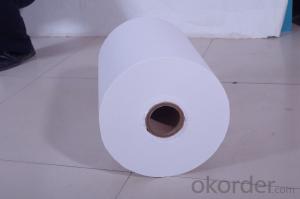When it comes to heating, ventilation, and air conditioning (HVAC) systems, there’s a versatile and adaptable option that many homeowners and contractors are turning to: flexible duct pipes. Known for their flexibility, ease of installation, and cost-effectiveness, these ducts are becoming increasingly popular in both residential and commercial settings. Let’s dive into the world of flexible duct pipes and explore their benefits, installation process, and maintenance tips.
The Appeal of Flexibility
Flexible duct pipes, also known as semi-rigid ducts, offer a high degree of flexibility that makes them perfect for navigating around obstacles and fitting into tight spaces. This is particularly useful in older homes or buildings with irregular layouts, where traditional rigid ducts may not be the best fit. The flexibility allows for more creative airflow designs, ensuring that every corner of a room can be reached with conditioned air.
A Cost-Effective Choice
One of the main reasons people choose flexible duct pipes over traditional options is the cost savings. They are generally less expensive to purchase and install, which can be a significant advantage for those on a tight budget. Additionally, because they are easier to install, labor costs are often lower, further adding to the overall savings.
Easy Installation: A Step-by-Step Guide
Installing flexible duct pipes is a relatively straightforward process, but it’s important to follow the right steps to ensure a proper fit and function. Here’s a simple guide to help you through the process:
1. Measure and Plan: Before you start, measure the spaces where the ducts will be installed and plan the route they will take.
2. Cut the Ducts: Using a quality duct cutter, cut the flexible duct pipes to the appropriate lengths.
3. Connect the Ducts: Employ duct connectors to join the pieces together seamlessly.
4. Secure the Ducts: Use duct mastic or clamps to secure the ducts in place and prevent them from shifting.
5. Seal the Joints: Apply foil tape or mastic to seal any joints or connections, ensuring there are no air leaks.
6. Test the System: Once everything is in place, test the HVAC system to make sure the airflow is smooth and even.
The Role of Insulation
Insulation plays a crucial role in maintaining the efficiency of your HVAC system. Flexible duct pipes can be insulated, which helps to reduce heat loss or gain, depending on the season. This not only keeps your home comfortable but also saves on energy costs. When choosing insulated flexible ducts, look for products with a high R-value for maximum efficiency.
Maintenance Made Simple
Proper maintenance of your flexible duct pipes is essential for ensuring their longevity and the efficiency of your HVAC system. Here are some simple maintenance tips:
– Regular Inspections: Check the ducts for any signs of wear, tear, or damage at least once a year.
– Clean the Ducts: Dust and debris can accumulate over time, so it’s important to clean the ducts periodically to maintain airflow.
– Check for Leaks: Inspect the joints and connections for any air leaks and seal them as needed.
– Replace When Necessary: If the ducts are damaged beyond repair, don’t hesitate to replace them to maintain system performance.
The Environmental Impact
Flexible duct pipes can also have a positive impact on the environment. Since they are often made from recyclable materials and can contribute to energy savings, they are a more sustainable choice for your HVAC system. By choosing flexible ducts, you’re not only making a practical decision but also an eco-friendly one.
The Downside: A Word of Caution
While flexible duct pipes offer many benefits, it’s important to be aware of their potential downsides. They may not be as durable as rigid ducts and can be more susceptible to damage from rodents or sharp objects. Additionally, if not properly sealed, they can lead to air leaks, reducing the efficiency of your HVAC system.
Conclusion
Flexible duct pipes are a smart, adaptable, and cost-effective solution for HVAC systems. They offer a range of advantages, from ease of installation to energy efficiency, making them an attractive option for many homeowners and contractors. By following proper installation and maintenance practices, you can enjoy the benefits of flexible duct pipes for years to come. So, the next time you’re considering an HVAC upgrade, don’t forget to give flexible duct pipes a serious look.

